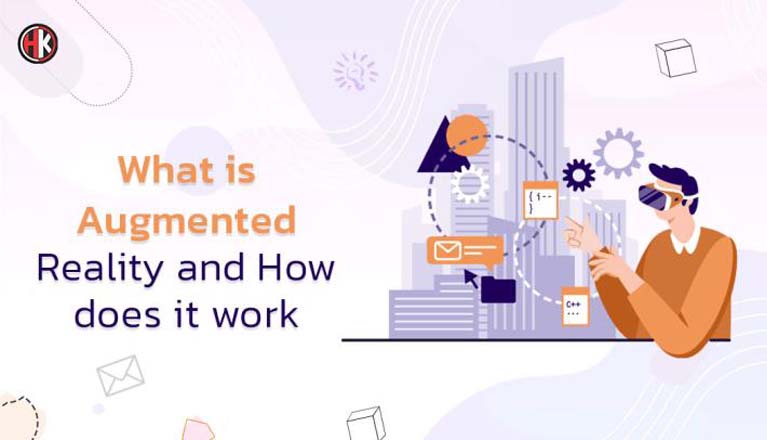Recent technological developments have spawned immersive experiences that muddle the boundaries between the actual and virtual worlds. One such technology that has attracted a lot of attention and appeal is augmented reality (AR).
In recent years, augmented reality (AR) has quickly grown in popularity, capturing consumers’ attention and revolutionising numerous businesses. This cutting-edge technology enhances our perception and interaction with our surroundings by fusing the virtual and physical worlds.
By harnessing the power of Augmented Reality, Samsung has developed an AR Zone App for its Galaxy smartphones that improves user experiences and lets users experiment with new methods of expressing themselves in the digital sphere by utilizing power of augmented reality.
In this article, we’ll delve into the definition of augmented reality (AR), examine its operation, comprehend the magic of this game-changing technology, and shed light on the unique ways it is used in different applications.
Understanding Augmented Reality
Defining Augmented Reality (AR)
The term “augmented reality,” or “AR,” refers to a technology that superimposes digital data or virtual objects over the world in real time. It improves the user’s impression of reality and creates an immersive and participatory experience by seamlessly fusing virtual and real-world elements,
The Essence of AR: Combining Real and Virtual Worlds
Augmented reality (AR) technology incorporates computer-generated sensory inputs such as sounds, images, and haptic feedback to improve the user’s sense of reality. In contrast to Virtual Reality (VR), which completely immerses users in a simulated environment, augmented reality (AR) improves the current environment by superimposing digital content on it.
Augmented Reality in Simple Words
Simply described, augmented reality is the addition of a digital layer to the physical world. Imagine having augmented reality (AR) glasses on and being able to view more information about the things around you, such as product details while shopping or detailed maintenance instructions. The real world becomes more educational, interesting, and participatory thanks to AR.
How Does AR Work?
Sensing the Real World
- Camera: AR systems make use of cameras to continuously record the user’s actual environment.
- Sensors: Gyroscopes and accelerometers offer information on the user’s orientation and movement.
Tracking and Mapping
- Image Recognition: To detect and track real-world objects, surfaces, or markers, AR applications use picture recognition techniques.
- Simultaneous Localization and Mapping (SLAM): With the use of SLAM technology, AR devices can recognise their position and movement inside the actual world.
Rendering Virtual Content
- Using 3D modelling techniques: virtual content is produced, enabling the creation of interactive and realistic digital things.
- Superimposition: AR devices link virtual content with recognised objects or surfaces in the user’s vision of the real world.
Displaying Augmented Reality
- Head-Mounted Displays (HMDs): Wearable HMDs, such as smart glasses or helmets, which project digital content into the user’s field of vision, can be used to experience augmented reality (AR).
- Mobile devices: By utilising the cameras and displays built into smartphones and tablets, AR applications may be accessed.
Augmented Reality in Action
AR Applications and Use Cases
Gaming and Entertainment:
With its immersive experiences that blend the real and virtual worlds, augmented reality has completely changed the gaming business. Users of augmented reality (AR) games can interact with virtual people and items that are actually present. With the use of this technology, players can experience never-before-seen levels of realism while exploring new dimensions and participating in interactive gameplay.
Education and Training:
The potential for augmented reality in teaching is enormous. Through the provision of interactive and immersive educational content, AR improves learning experiences. Through 3D models, animations, and simulations, teachers can help students visualize difficult ideas, making abstract concepts more relatable and interesting. AR can be used to teach a variety of subjects, including anatomy and chemistry as well as history and geography, encouraging active learning and memory retention.
Retail and E-commerce:
The use of augmented reality has changed how consumers browse and use products online. Customers can utilize AR apps with virtual try-on features to test out things like apparel, accessories, and cosmetics without having to physically try them on. Additionally, AR makes it possible for buyers to see furniture and home decor in a real-world setting so they can judge how well the products fit in their rooms. By making individualized recommendations and presenting customers with an engaging and immersive environment, this technology improves the buying experience.
Architecture and Design:
Urban planners, interior designers, and architects now rely heavily on augmented reality. Professionals can visualize and plan by superimposing virtual models onto actual situations using augmented reality (AR). Before construction even starts, clients may see building ideas in a more dynamic and realistic way thanks to augmented reality (AR) technology used by architects. By enabling a common visual knowledge of the design, this technology also promotes collaboration among project stakeholders.
Healthcare and Medicine:
In the healthcare sector, augmented reality has made great strides, revolutionizing patient care, training, and medical procedures. During operations, surgeons can utilize augmented reality (AR) to overlay real-time data onto their field of view, such as patient vitals and medical imaging, giving them critical information without having to change their focus.
AR is used in medical training programs to imitate operations and procedures, giving students the chance to practice in a safe and realistic setting. Additionally, by projecting medical data and visuals directly onto the patient’s body, augmented reality (AR) facilitates patient diagnosis and fosters better patient-provider communication.
Augmented Reality Apps
Apps for augmented reality use a combination of hardware, software, and algorithms to create engrossing, immersive experiences that connect the physical and digital worlds. We may anticipate even more cutting-edge applications and use cases for augmented reality in the future as technology advances.
AR Development
Applications for augmented reality are created utilizing specialized software development kits (SDKs) and frameworks, which offer the required resources and tools. The camera, sensors, and computing power of the smartphone are accessible through these development kits’ APIs (Application Programming Interfaces). Programming languages like C#, JavaScript, or Swift are used by developers to build augmented reality (AR) applications that can operate on a variety of platforms, including mobile phones and head-mounted displays.
App Functionality
Apps for augmented reality use the camera and sensors on the user’s device to scan their surroundings and track surfaces or objects. The software uses the camera to record live videos or still photos that are later analyzed to identify and comprehend the actual world.
To recognize and track markers or objects, AR software uses computer vision algorithms, image recognition, and machine learning techniques. Based on this knowledge, virtual objects or surfaces are produced and projected onto the user’s perspective, aligning with them. The functionality of the program also contains interactive components that let users manipulate and engage with the virtual information in real-time using gestures or touch inputs.
Also Read: Amazing Creations from Satin Fabric
Conclusion
Through the seamless mixing of the actual and digital worlds, augmented reality is a revolutionary technology that enhances our sense of reality. The use of augmented reality (AR), which combines real-world settings with virtual content, improves our daily lives, opens up new horizons for human-computer interaction, and offers engrossing and immersive experiences in a variety of industries.
Understanding the core ideas behind AR and how it functions sets the road for its ongoing development and presents intriguing new opportunities. The future of technology and human experiences will be shaped by progressively more immersive, useful, and intuitive applications of augmented reality as it develops.



